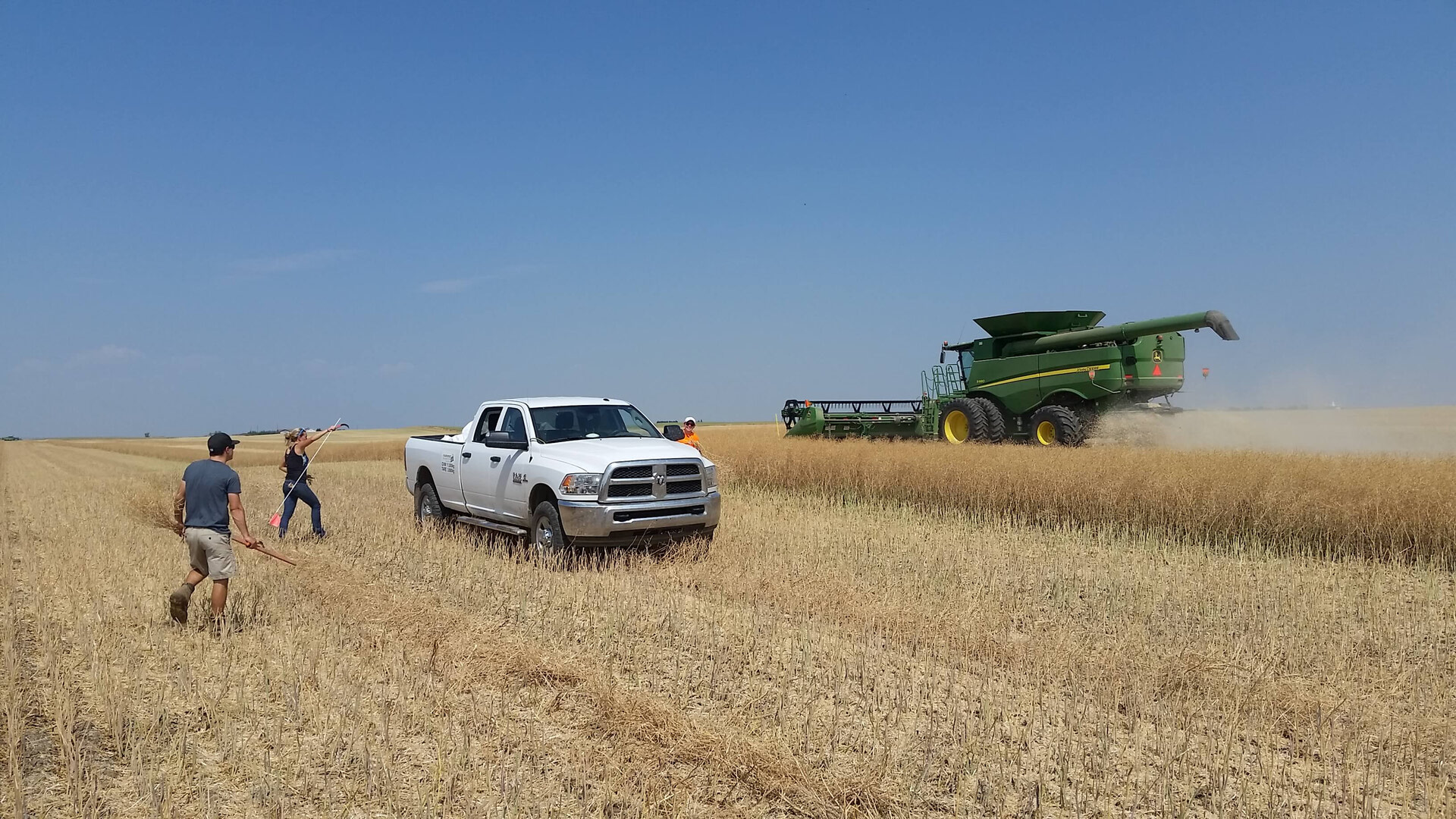BackgroundThe study will assess management zones for variable application of nitrogen fertilizer based on 5 years of previous yield maps and soil sampling. Complementary analyses will be done with landform analysis and soil sampling. Zones will be further assessed in relation to aerial/satellite photos and analysis of elevation data and terrain derivatives at the end of the study. The project will assess variable rate nitrogen management with respect to development of management zones. |
|
||||||||||
Research Questions
|
||||||
Methods |
||||||||||
|
|
|||||||||
Management ZonesYield maps collected for fields over a 5 year period prior to the study, were analyzed with statistical and SMS GIS software to identify areas which have high and very high normalized yields average normalized yields and low and very low normalized yields. Three management zones delineated with high and very high areas in the high zone, average area in the average zone and low and very low areas in the low zone. These zones were the basis for the prescription maps. Fields for the study were selected based on this analyses and showed 3 distinct zones. Eight strips (25 to 50 m in length), 2 for each of 4 treatments were located in each of 2 fields seeded to the same crop in the annual crops rotation. Fertilizer rates were based on soil test data for each of the zones in the treatments. Maximum rates were for highest possible yield in the recommendations. 50 % rates assessed in upper and lower/depression zones. In the event fields had little residual soil test N, fertilizer rates were set at 50, 100 and 150 lb per acre at randomly locations within each strip. Four rates of N fertilizer (0, 50, 100 and 150% recommended rate) were applied within two randomly located replicates in 2 trial sites (4 replicates total) per field (Figure 4). Fertilizer rates were based on soil test NO3-N analysis from the previous fall, and the corresponding target yields for the crop seeded that year (MAFRI 2009a). Sites were a minimum of 120 feet wide with 4 treatments on each of the management zones. Boundaries of field scale plots will be geo-referenced. We may have to adjust the size of the 0 rate strips to accommodate producers. Phosphorus and other plant nutrients will be added at uniform rates based on soil test analysis for yield goals in the management zones. |
Results
Significant improvements in yield were found when comparing plots given nitrogen fertilizer applications versus plots given no nitrogen applications, but not between different fertilizer rates. This is partially due to the variability correlated to terrain and correlations ranging from farm to farm. This emphasized the need for soil tests to account for mineralizable nitrogen, which they currently don’t. Moulin hypothesized that mineralizable nitrogen builds up in the soil following rotations (ex. cereal-canola) and annual nitrogen fertilizer applications, and is available to the crop during the growing season, but is not accounted for in soil test analyses. In contrast to 2014, 2015 and 2016, dry conditions during summer 2017, preceded by ample spring soil moisture, forced crops to root deeper than normal. As a result canola accessed Nitrogen which accumulated normally below the root zone in previous years, and yield was similar for all fertilizer treatments in several fields. Furthermore, yield response may also be attributed to a buildup of mineralizable Nitrogen in or below the root zone. It is possible that mineralizable Nitrogen and the distribution of Nitrogen below the root zone resulted in high production in the control treatments, but updated statistical analysis will provide more insight into this. Phosphorus was applied with seed at the maximum possible rate, while potassium and sulphur were judged sufficient based on soil test and fertilizer rates used by producers. Soil test phosphorous varied with terrain attributes, which accounted for a significant proportion of the variability of canola yield, but (again) varied from farm to farm. The phosphorus tended to accumulate in lower slope positions, in areas with low production. Soil properties and the interaction with canola variety, growing season precipitation and temperature also varied considerably with respect to yield. The economic return and efficiency of fertilizer use from variable rate management varied between fields and between farms, as did canola yield. While canola production and net revenue functions generally followed conventional response curves, the effects of zones and nitrogen rates at each individual site were mixed. Overall, nitrogen and production zones were significant with the high production zones generating a net $67 more per hectare, on average, and low production zones generating a net $61 less per hectare compared to average zones. Farm location had significant effects on canola yield, with profitability ranging from negative $490 to positive $530 per hectare. Overall, the integration of an effective variable rate fertility program is very complicated so carrying out field by field analysis is paramount to potential success. Differences in management, including agronomic practices, variety selection and types of fertilizer, as well as soil properties, elevation and terrain attributes all impact fertility and should be considered, along with historical yields, when planning out a variable rate fertility program or studying fields that do utilize this technology. |
RecommendationsFuture studies on this topic may benefit from including UAV data (to show fertilizer variability response through in-season images), machine learning methods to create prescription maps (as the analyses relate a large number of variables to potential canola yield) and significant expertise with prescription mapping software (as well as testing the prescription map for the seeder 1-2 days prior to seeding). Thorough preparations well in advance of seeding, combined with post-harvest or pre-seeding soil sampling are recommended to ensure accuracy when carried out at busy times (especially in regions with short growing seasons).
|
|||||||

